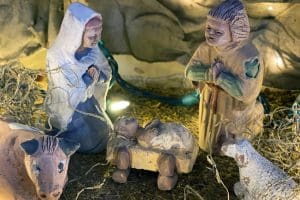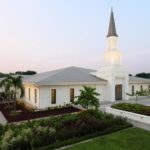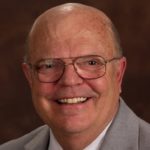“For it is expedient that I, the Lord, should make every man accountable, as a steward over earthly blessings, which I have made and prepared for my creatures. I, the Lord, stretched out the heavens, and built the earth, my very handiwork; and all things therein are mine.”
Doctrine and Covenants 104:13-14
Called to be a Steward
While Mark Twain accidentally set a forest fire at Lake Tahoe and was more mesmerized than horrified, Brigham Young was already advising the Latter-day Saints to care for their environment.
“Never let anything go to waste. Be prudent, save everything, and what you get more than you can take care of yourselves, ask your neighbors to help you.”
Brigham believed that nothing God has provided should be squandered and taught the principles of conservation to his people.
“The counsel to care for the environment has always been there,” said Paulette Stauffer Henriod, the Environmental Advocacy Program Specialist at Mormon Women for Ethical Government (MWEG). “We have a long record of it in scripture, and counsel over the years from Church leaders.”
For many Latter-day Saints, their faith is a powerful force inspiring them to care for and protect the environment. From nonprofit organizations to college campuses, dedicated saints are turning their beliefs about stewardship into action.
The Church emphasizes environmental stewardship as a key gospel principle, encouraging members to care for God’s creation.
World Report
Between the morning and afternoon sessions of the April General Conference, the Church’s 2025 World Report highlighted three major environmental initiatives that the Church has been implementing: solar energy, waste management, and water conservation.
Each initiative emphasizes the importance of wise stewardship over the resources Heavenly Father has given to his children and is being implemented worldwide.
“Following the divine guidance from the First Presidency, the Church of Jesus Christ of Latter-day Saints is accelerating efforts to be wise stewards over God’s creations,” the report states.
As Bishop Caussé, the Presiding Bishop, emphasized, “We have received that special responsibility from God to take care of his creations. And every one of us, individually and collectively, has something to do.”
To set an example for members, the Church has begun to make the BYU-Hawaii campus, Laie Temple, and the Polynesian Cultural Center energy independent by 2026, by using solar energy.
About one-third of the university already runs on solar power, supported by four acres of solar panels across campus. Three large battery banks store excess energy, and a new seven-acre solar farm is in progress.
Once complete, these systems will make all three areas entirely energy independent, allowing the campus to operate on 100% solar power with up to a five-day battery backup.
This effort is part of a much larger movement. Over 700 other solar projects are currently being spearheaded by the Church across the world, reflecting a growing institutional push toward environmental stewardship, and members are taking notice.
BYU Sustainability

Eliza Freestone, a computer science major at BYU, said, “If more people hear about what the Church is doing as a whole, that might help them make changes themselves. Sometimes the things that big organizations do can make a lot more impact than individuals.”
Freestone volunteers with BYU Sustainability and has organized and run two clothing swaps on BYU campus, allowing students to exchange items instead of sending them to the landfill.
Clothing production creates significant environmental and social costs, including heavy water use, water pollution, and the exploitation of vulnerable workers in poor, undeveloped countries.
Through her work on campus, Freestone created the clothing swap initiative to help reduce waste and promote more sustainable consumption habits amongst college students.
This local effort echoes the Church’s larger commitment to responsible waste management and environmental stewardship. Beyond campuses, the Church is also implementing various programs aimed at waste reduction across its global operations.
Printing Division
At the Printing Division in Salt Lake City, everything from sacrament cups to scriptures and Church magazines are produced with recycled material, and extra cut material from these products is recycled.
Inspired by the gospel principle of stewardship, this facility is one of the largest in-plant operations globally. It recycles around 220 tonnes of paper, plastic, aluminum, and other materials monthly.
In addition to these print products, electronics used for any Church operation are fixed and redistributed to Pathway students, those in need, or genealogical efforts, and any electronics at the end of their life are recycled by a contractor.
Water Conservation
The World Report also highlighted the Church’s water conservation initiatives. Smart controllers help reduce water use by tailoring irrigation to current weather conditions. Additionally, in arid areas like Mesa, Arizona, the Church is landscaping with water-wise plants to cut back on water consumption.
Other organizations and individuals are drawing on Latter-day Saint heritage to promote sustainable urban planning.
Søren Simonsen, an urban planner and Board Member of the Mormon Environmental Stewardship Alliance (MESA), said that the Church “has been leading that charge on conservation, retrofitting landscapes around Church buildings, and building new chapels that have a much lighter demand on water resources.”
MESA is another nonprofit that is independent of the Church but rooted in Latter-day Saint belief. It advocates for stronger environmental laws and policies and collaborates with legislators to highlight the importance of responsible environmental stewardship.
The Plat of Zion

For Simonsen, early saints like Joseph Smith and Brigham Young are great early examples, who helped design the “Plat of Zion.” This was a grid layout for Zion, based on walkable communities, agricultural self-sufficiency, and creating close social ties. This became the foundation for over 750 early Mormon settlements from the 1830s to the 1930s.
Drawing on that history, Simonsen, as a city planner, wanted to bring those principles into a modern context. His passion for walkable communities led him to become a key champion for the development of TRAX, Utah’s light rail system. Now, on a typical weekday, nearly 37,000 people board TRAX.
A Call of Christian Discipleship
“To care for the earth is very much one of the call of Christian discipleship, and we need to celebrate that, share it, and set an example for others in our faith,” said Mike Maxwell, a board member of Latter-day Saint Earth Stewardship.
Latter-day Saint Earth Stewardship is a non-profit organization that explores and promotes earth stewardship as a gospel principle, focusing specifically on public awareness and education.
“We couldn’t be more thrilled or happy that this is becoming more of a priority,” Maxwell explained. “We can play a profound role in ministering to those affected by the changing climate and pollution, who are less fortunate than us.”

Stauffer Henriod from MWEG emphasized this ministering aspect of environmental stewardship: “The actions that we take in a well-developed country like the United States will have impacts on people in countries that are doing comparatively little to create air pollution, but will probably suffer the consequences the most.”
She reflected on the first and second commandments, which command us to love God and love our neighbor. “When we think about how to be a good steward of the environment, we’re also thinking about our brothers and sisters that live throughout the world,” Stauffer Henriod said, “showing that we care about their health and well-being, and that we care about them.”
Caring for God’s creation can also involve talking about and discussing the environment, a point emphasized by both Maxwell and Freestone. Their inspiration came from climate scientist Katherine Hayhoe, who delivered a forum address at BYU in 2022 titled “Loving All God’s Creation.”
“One simple thing that Katherine Hayhoe talks about is just talking about the climate and what we can do. We’re the small salt of the earth, but still significant,” said Freestone.
Maxwell recalled talking to Hayhoe a couple of years back about how to draw on shared values and shared faith, using language that does not trigger bias.
He recommends using language and rhetoric that resonates with people in conversations about the environment, and commends the Church for their work, sharing their ongoing efforts in an accessible way.
“Part of how you can express your commitment to Christianity, and the gospel, to Jesus Christ, is by being good stewards of the earth,” Maxwell said.
Talking to government leaders about caring for the environment is a way to start, said Stauffer Henriod. “When we talk about the environment, we help to increase our own awareness and the awareness of others. And we should also talk to people who are making decisions, so they can have an impact.”
Stauffer Henriod also shared that talking with family and making a plan for conscious consumption and waste reduction can help Latter-day Saints be more careful about using resources.
Talking about your plan as a family to recycle or reuse items, or to not purchase them unless you really need them, can be a place to start, she said.
Simonsen also proposed integrating the principle of stewardship more directly into the Church curriculum. This would build on the Church’s global environmental efforts and help members of all ages link their faith to responsible environmental care.
“When something is emphasized, it becomes part of our collective consciousness. Thinking collectively about the environment could have a great benefit in reducing conflict and bringing us together to do more, to lift, love, and support each other as children of God,” he said.
By coming together with love, dedication, and a strong sense of responsibility, Latter-day Saints can and are helping protect the earth for future generations, fulfilling a responsibility of godly stewardship.
God’s charge to use the earth’s blessings “with judgment, not to excess, neither by extortion,” as recorded in Doctrine and Covenants 59:20, is sacred. It is an invitation for all disciples of Christ to act with purpose and love, so that the earth’s beauty continues to bless all of God’s children, today and in the future.





















Sylvia AllenAugust 9, 2025
Caring for this earth is important. It is best done through liberty and property rights not control. It is best done through the use of technology and having faith in mankind's ability to solve any problem through the use of freedom.
Aaron SmithAugust 7, 2025
The earth has one purpose: to be a testing ground for God's children in mortality. Without God's children on it, earth would have no divine purpose at all. It will one day be resurrected and celestialized, after the mortal period has ended. The earth has already been saved by God's plan and His Son's Atonement. Yes, we are to be wise and responsible stewards of all that God gives us. Let us never cross the line into thinking that our purpose is to save the earth, or worse, to worship it, as is the case with many extremists. Our purpose is much greater than anything that extreme environmentalists promote.